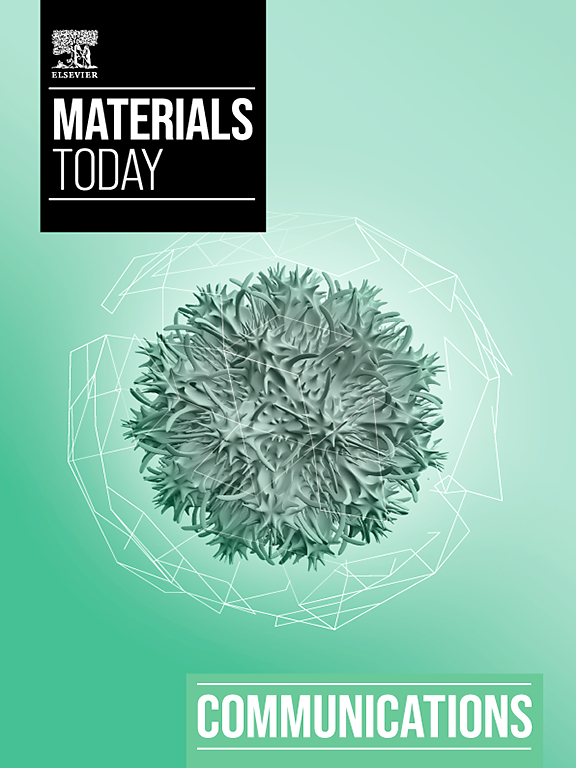High-fidelity prediction of forming quality for self-piercing riveted joints in aluminum alloy based on machine learning
IF 4.5
3区 材料科学
Q2 MATERIALS SCIENCE, MULTIDISCIPLINARY
引用次数: 0
Abstract
The effect of rivet length and sheet thickness on the cross-sectional formation and tensile-shear performance of self-piercing riveted joints in AA5754 aluminum alloy was examined through experimental investigation. The influence degree of joining parameters on the forming quality was analyzed. It was revealed that rivet length and sheet thickness are pivotal factors influencing the tensile-shear strength of the joint, culminating in the identification of four optimal riveting process schemes:Lhh、Lhh、Lhh and Lhh. A simulation model for self-piercing riveting was established, employing the GISSMO failure model and the modified Mohr-Coulomb (MMC) failure criteria to predict the damage and fracture of the aluminum alloy. A plethora of high-quality datasets depicting the cross-sections of the joints were derived from simulation analysis. Subsequently, the structure and hyperparameter determination method of traditional neural network prediction models were elucidated. By amalgamating the Aquila Optimization (AO) algorithm with the African Vultures Optimization Algorithm (AVOA), a hybrid optimization algorithm model known as MIC_AOAVOA was developed. This model effectively harnesses the strengths of various algorithms to augment search efficiency and optimization capabilities. Strategies for population initialization and adaptive weight adjustments were incorporated to enhance the algorithm's convergence velocity and the quality of solutions. The cauchy opposition-based learning (COBL) and fitness-distance balance (FDB) strategy further refined the composite algorithm, bolstering its global search capabilities and population diversity. Comparative analyses were performed with single algorithm models and traditional BP neural network models, with an in-depth examination of the MIC_AOAVOA_BP model's prediction outcomes. Comprehensive evaluations utilizing error statistics and composite evaluation indicators demonstrated that the model consistently achieved mean absolute percentage error (MAPE) values below 10 %, correlation coefficients (R²) exceeding 0.98, and stable mean squared error (MSE) values around 0.0002 across the prediction of three metrics. These results underscore the model's high precision and stability. Consequently, the proposed enhanced model offers a solution that is more stable, accurate, and robust for the prediction of forming quality in self-piercing riveted joints within engineering applications.基于机器学习的铝合金自冲铆接成型质量高保真预测
通过实验研究了铆钉长度和板材厚度对 AA5754 铝合金自冲铆接接头截面成形和拉伸剪切性能的影响。分析了连接参数对成形质量的影响程度。结果表明,铆钉长度和板材厚度是影响接头拉伸剪切强度的关键因素,并最终确定了四种最佳铆接工艺方案:Lhh、Lhh、Lhh 和 Lhh。利用 GISSMO 失效模型和修正的莫尔-库仑(MMC)失效准则,建立了自冲铆接模拟模型,以预测铝合金的损伤和断裂。通过模拟分析得出了大量描述接头横截面的高质量数据集。随后,阐明了传统神经网络预测模型的结构和超参数确定方法。通过将 Aquila 优化算法(AO)与非洲秃鹫优化算法(AVOA)相结合,开发出一种混合优化算法模型,即 MIC_AOAVOA。该模型有效利用了各种算法的优势,提高了搜索效率和优化能力。为了提高算法的收敛速度和解决方案的质量,该模型采用了种群初始化和自适应权重调整策略。基于考奇对立的学习(COBL)和适应性-距离平衡(FDB)策略进一步完善了复合算法,增强了其全局搜索能力和种群多样性。与单一算法模型和传统 BP 神经网络模型进行了比较分析,并深入研究了 MIC_OAAVOA_BP 模型的预测结果。利用误差统计和综合评估指标进行的综合评估表明,该模型在三个指标的预测中始终达到低于 10% 的平均绝对百分比误差 (MAPE)值、超过 0.98 的相关系数 (R²),以及稳定的 0.0002 左右的均方误差 (MSE)值。这些结果凸显了模型的高精度和稳定性。因此,所提出的增强型模型为工程应用中自冲铆接接头成形质量的预测提供了一种更稳定、更准确、更稳健的解决方案。
本文章由计算机程序翻译,如有差异,请以英文原文为准。
求助全文
约1分钟内获得全文
求助全文
来源期刊

Materials Today Communications
Materials Science-General Materials Science
CiteScore
5.20
自引率
5.30%
发文量
1783
审稿时长
51 days
期刊介绍:
Materials Today Communications is a primary research journal covering all areas of materials science. The journal offers the materials community an innovative, efficient and flexible route for the publication of original research which has not found the right home on first submission.
 求助内容:
求助内容: 应助结果提醒方式:
应助结果提醒方式:


